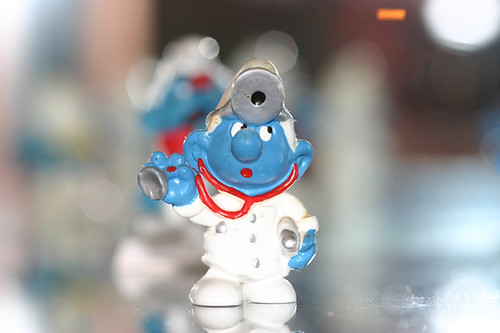Measuring end-tidal CO2 in cardiac arrest patients is helpful for
- confirming tracheal tube placement
- assessing the effectiveness of chest compressions
- predicting likelihood of return of spontaneous circulation (ROSC), in that a persistently low ETCO2 tends to predict death, whereas a high or rising ETCO2 is associated with a higher chance of ROSC.
It may be however that its predictive ability depends on the type of cardiac arrest, and how far into the resuscitation you’ve got when you measure the ETCO2. Consider this new study from Slovenian pre-hospital emergency physicians:
Methods: The study included two cohorts of patients: cardiac arrest due to asphyxia with initial rhythm asystole or pulseless electrical activity (PEA), and cardiac arrest due to arrhythmia with initial rhythm VF or pulseless VT. The causes of asphyxia were: asthma, severe acute respiratory failure, tumor of the airway, suicide by hanging, acute intoxication, pneumonia and a foreign body in the airway.PetCO2 was measured for both groups immediately after intubation and repeatedly every minute, both for patients with or without return of spontaneous circulation (ROSC). We compared the dynamic pattern of PetCO2 between groups. Resuscitation procedures were performed by an emergency medical team (emergency medical physician and two emergency medical technicians or registered nurses) in accordance with 2005 ERC Guideline
Results: Between June 2006 and June 2009 resuscitation was attempted in 325 patients and in this study we included 51 patients with asphyxial cardiac arrest and 63 patients with VF/VT cardiac arrest. The initial values of PetCO2 were significantly higher in the group with asphyxial cardiac arrest (6.74 ± 4.22 kilopascals (kPa) versus 4.51 ± 2.47 kPa; P = 0.004). In the group with asphyxial cardiac arrest, the initial values of PetCO2 did not show a significant difference when we compared patients with and without ROSC (6.96 ± 3.63 kPa versus 5.77 ± 4.64 kPa; P = 0.313). We confirmed significantly higher initial PetCO2 values for those with ROSC in the group with primary cardiac arrest (4.62 ± 2.46 kPa versus 3.29 ± 1.76 kPa; P = 0.041).

A significant difference in PetCO2 values for those with and without ROSC was achieved after five minutes of CPR in both groups (asphyxial arrest: 6.09 ± 2.63 kPa versus 4.47 ± 3.35 kPa; P = 0.006; primary arrest: 5.63 ± 2.01 kPa versus 4.26 ± 1.86; P = 0.015)
In mmHg, the PetCO2 values for those with and without ROSC after five minutes of CPR was: asphyxial arrest: 42.3 ± 20 mmHg versus 34 ± 25.5 mmHg; P = 0.006; primary arrest: 42.8 ± 15.3 mmHg versus 32.3 ± 14.1 mmHg; P = 0.015
Graphically, this difference in ROSC vs non-ROSC PetCO2 for both groups appeared to be even greater at ten minutes, with higher statistically significance (p<0.001), although the values of PetCO2 are not given in the paper.
In all patients with ROSC the initial PetCO2 was again higher than 1.33 kPa (10.1 mmHg).
Conclusions: The dynamic pattern of PetCO2 values during out-of-hospital CPR showed higher values of PetCO2 in the first two minutes of CPR in asphyxia, and a prognostic value of initial PetCO2 only in primary VF/VT cardiac arrest. A prognostic value of PetCO2 for ROSC was achieved after the fifth minute of CPR in both groups and remained present until final values. This difference seems to be a useful criterion in pre-hospital diagnostic procedures and attendance of cardiac arrest.
The authors summarise with the following key messages:
- Initial values of PetCO2 are higher in asphyxial cardiac arrest than in primary cardiac arrest.
- Initial values of PetCO2 in asphyxial cardiac arrest do not have a prognostic value for resuscitation outcome.
- The prognostic value of PetCO2 for ROSC was achieved after the fifth minute of CPR in both groups and remained present until the final values.
- The values of PetCO2 seem to be useful in differentiating the causes of cardiac arrest in a pre-hospital setting.
I think that last one’s a bit of a stretch. For me, this paper confirms that the longer you are into a cardiac arrest resuscitation, the worse news a low PetCO2 is. The lack of predictive value of initial PetCO2, particularly in the asphyxia group, is interesting but not surprising.
The dynamic pattern of end-tidal carbon dioxide during cardiopulmonary resuscitation: difference between asphyxial cardiac arrest and ventricular fibrillation/pulseless ventricular tachycardia cardiac arrest
Critical Care 2011, 15:R13
 Flying Doctor Minh Le Cong describes the profile and success rates of emergency endotracheal intubation conducted by the Queensland Royal Flying Doctor Service aeromedical retrieval team, comprising a doctor and flight nurse. It would be interesting to know how many more patients have been added to the registry since this was submitted. An important contribution to the literature in retrieval medicine.
Flying Doctor Minh Le Cong describes the profile and success rates of emergency endotracheal intubation conducted by the Queensland Royal Flying Doctor Service aeromedical retrieval team, comprising a doctor and flight nurse. It would be interesting to know how many more patients have been added to the registry since this was submitted. An important contribution to the literature in retrieval medicine.





 Not exactly the class 1 evidence we’d (well, I’d) like to see, but a prospective study from France comparing outcomes in patients treated by routine pre-hospital providers with those managed in the field by emergency physicians working for SMUR (
Not exactly the class 1 evidence we’d (well, I’d) like to see, but a prospective study from France comparing outcomes in patients treated by routine pre-hospital providers with those managed in the field by emergency physicians working for SMUR (

